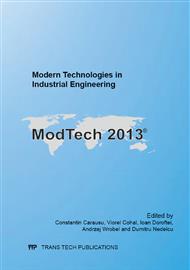p.555
p.561
p.567
p.573
p.577
p.582
p.588
p.594
p.603
Controlling the Movement of the Robot's Effector on the Plane Using the SVG Markup Language
Abstract:
In certain situations the robots effector must be moved strictly according to some path. The example of such case could be painting, cutting, milling, welding, glue applying etc. The common feature of the mentioned operations is that in the most of cases, the movement of the tool is realized on the plane. The advantage of use of a tool operated by a robot is that the work area could be placed anywhere in the manipulators workspace and can be set at almost any angle relative to ground. By specifying a local coordinate system, the operator can define the path of the tool. Referring to the earlier studies of the author, this paper continues the discussion of the possibility of using the markup languages in the field of robotics. The further part describes a proposal for the application of SVG markup language to describe the objects forming the path of a tool. Just like XML, the SVG code can be processed in many ways, giving the possibility of translation to the particular robots programming language. The described method has also some disadvantages arising from the purposes of the SVG standard, like the 2D nature of a path.
Info:
Periodical:
Pages:
577-581
Citation:
Online since:
November 2013
Authors:
Keywords:
Price:
Сopyright:
© 2014 Trans Tech Publications Ltd. All Rights Reserved
Share:
Citation:


